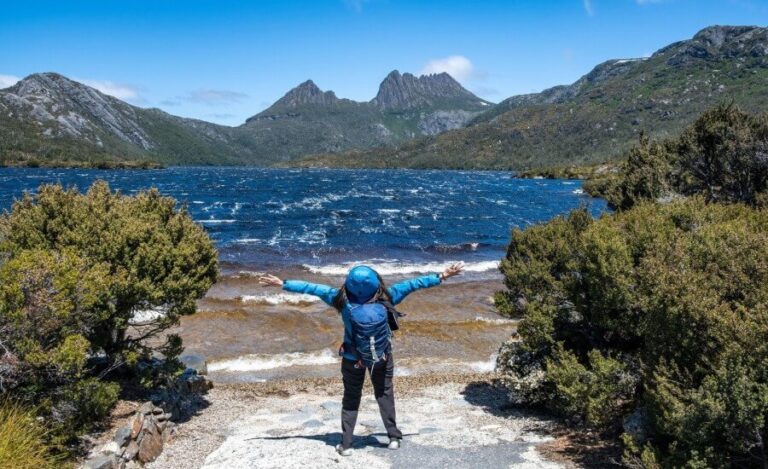
As the first light breaks over a misty rainforest canopy, you take a deep breath of clean, oxygen-rich air. The sounds of awakening wildlife surround you no engines, no notifications, no digital disruptions. This moment connects you not just to this place, but to a greater purpose: exploring our world while actively preserving it for future generations.
The climate crisis has forced us to reconsider many aspects of modern life, with few activities having a more significant environmental impact than travel. Yet travel remains one of humanity’s most transformative experiences broadening perspectives, fostering cross-cultural understanding, and creating profound connections to our planet.
The good news? We don’t need to choose between exploring the world and protecting it. Carbon-neutral travel offers a path to adventure that respects planetary boundaries while creating more authentic, meaningful experiences. By combining conscious carbon offsetting with digital disconnection, travelers can reduce both their environmental footprint and the technological barriers that often separate us from genuine immersion in destinations.
This guide will show you practical steps to transform your journeys into carbon-neutral adventures while embracing the enhanced awareness that comes from traveling without constant digital distractions. From selecting truly effective offset programs to discovering how technology-free travel naturally reduces environmental impact, you’ll learn how mindful travel creates benefits for both planetary and personal wellbeing.
Understanding Your Travel Carbon Footprint

Before exploring solutions, it’s essential to understand the problem. A typical international vacation generates carbon emissions through multiple channels:
Transportation Impact
Air travel creates the largest portion of most vacation carbon footprints. A single round-trip flight between New York and London generates approximately 1.6 metric tons of CO2 per passenger—almost 20% of the average American’s total annual carbon footprint in just one journey.
While aviation represents the highest-impact transportation choice, other options also generate significant emissions:
- Cruise ships: 0.40 kg CO2 per passenger-kilometer
- Long-distance train: 0.06 kg CO2 per passenger-kilometer
- Electric vehicles: 0.05 kg CO2 per passenger-kilometer (varies by electricity source)
- Buses: 0.03 kg CO2 per passenger-kilometer
Accommodation Choices
Where you stay significantly affects your travel footprint:
- Large resort hotels: 20-40 kg CO2 per room-night
- Standard hotels: 10-20 kg CO2 per room-night
- Eco-lodges with sustainability practices: 2-5 kg CO2 per room-night
- Camping or homestays: 1-2 kg CO2 per night
Activity Selection
Your choices within destinations further shape your impact:
- Helicopter tours: 240-500 kg CO2 per hour
- Motorized water sports: 25-80 kg CO2 per hour
- ATV or snowmobile tours: 15-40 kg CO2 per hour
- Hiking, cycling, sailing, or paddling: Nearly zero emissions
The Digital Addition
Interestingly, constant connectivity adds its own carbon burden. Consider these often-overlooked digital impacts:
- Daily social media posting with photos: 0.5-1 kg CO2 daily
- Cloud storage of unedited travel photos/videos: 0.2-0.5 kg CO2 per GB
- Streaming services while traveling: 0.2-0.4 kg CO2 per hour
- Constant GPS navigation: 0.1-0.2 kg CO2 daily
While these digital impacts may seem small compared to flights, they represent completely unnecessary emissions that also diminish travel experiences by creating barriers between travelers and destinations.
Effective Carbon Offsetting: Beyond Greenwashing

Carbon offsetting allows travelers to compensate for unavoidable emissions by funding projects that prevent or remove an equivalent amount of greenhouse gases elsewhere. However, not all offset programs deliver equal benefits. For truly effective offsetting:
Look for Third-Party Verification
Reputable offset projects undergo rigorous verification by independent organizations that confirm emission reductions. Look for certifications from:
- Gold Standard (established by WWF and other NGOs)
- Verified Carbon Standard (VCS)
- Climate Action Reserve
- American Carbon Registry
These certifications ensure your investment genuinely reduces emissions rather than supporting greenwashing efforts.
Prioritize Specific Project Types
The most effective offset projects typically include:
Renewable Energy in Developing Regions: These projects replace planned fossil fuel infrastructure with clean alternatives while supporting local economic development. Look for projects in regions transitioning from coal to renewables for maximum impact.
Forest Protection and Regeneration: Mature forests store enormous carbon while supporting biodiversity. The most effective projects work with indigenous communities who have protected forests for generations, supporting their land rights and traditional conservation practices.
Regenerative Agriculture: These projects transform conventional farming into carbon-sequestering operations through techniques like no-till farming, cover cropping, and agroforestry. They simultaneously improve soil health, water retention, and farm resilience.
Community-Based Projects: The most sustainable projects integrate climate action with community benefits like improved health outcomes, economic opportunities, and educational advancement creating solutions that communities enthusiastically maintain long-term.
Calculate Comprehensive Emissions
Use calculators that account for all travel components rather than just flights. Comprehensive options include:
- MyClimate.org (accounts for flights, accommodation, activities)
- Sustainable Travel International (includes radioactive forcing factors)
- Cool Effect (provides transparent project information)
Most importantly, view offsetting as just one component of a broader approach to sustainable travel—a necessary but insufficient step toward truly responsible exploration.
Beyond Offsetting: Reducing Your Travel Footprint

While offsetting addresses unavoidable emissions, the most effective approach combines offsetting with direct emission reductions:
Transportation Transformations
- Consider Surface Transportation: Trains generate roughly 1/7 the emissions of flying for comparable journeys. The revival of night trains across Europe and high-speed rail in Asia makes surface transportation increasingly viable for many routes.
- Choose Fewer, Longer Trips: Two weeks in one region creates significantly lower emissions than three separate week-long journeys to different continents, even with the same total travel time.
- Select Direct Flights When Flying: Take-off and landing consume disproportionate fuel. Direct flights typically reduce emissions by 15-20% compared to connecting itineraries.
Accommodation Approaches
- Seek Certified Green Properties: Accommodations with recognized certifications (LEED, Green Key, EarthCheck) typically generate 30-60% lower emissions than conventional alternatives through energy efficiency, renewable power, and waste reduction.
- Consider Alternative Lodging: Homestays, farm stays, and small locally-owned guesthouses often have inherently lower footprints while providing more authentic cultural experiences.
- Adapt to Local Conditions: Embrace natural ventilation instead of air conditioning, adjust to seasonal temperatures, and adopt local practices for resource conservation.
Activity Alignment
- Embrace Human-Powered Exploration: Hiking, cycling, paddling, and sailing create memorable experiences with minimal environmental impact while fostering deeper connection with landscapes.
- Support Conservation Through Visitation: Select activities that financially support protected areas, indigenous conservation, and habitat restoration through entrance fees and local employment.
- Choose Quality Over Quantity: Focus on fewer, deeper experiences rather than attempting to see everything. This approach reduces transportation between sites while creating more meaningful engagement.
The Unplugged Advantage: How Digital Disconnection Enhances Sustainability

Perhaps surprisingly, disconnecting from technology during travel naturally reduces environmental impact while enhancing experience quality:
Reduced Digital Infrastructure Demand
When travelers disconnect, they eliminate the considerable energy required for constant connectivity from data centers processing social media uploads to telecommunications networks maintaining signals in remote areas. While individual savings may seem small, collective disconnection would significantly reduce the expanding energy footprint of digital tourism.
More Thoughtful Documentation
Disconnected travelers tend to photograph more selectively, taking fewer but more meaningful images rather than documenting every moment. This selective approach drastically reduces the substantial cloud storage emissions generated by thousands of unreviewed vacation photos and videos.
Natural Alignment with Lower-Carbon Experiences
Unplugged travelers naturally gravitate toward experiences with lower environmental impacts finding satisfaction in longer hikes, conversations with locals, quiet observation of wildlife, and cultural immersion rather than energy-intensive entertainment requiring constant stimulation.
Enhanced Satisfaction Through Presence
Research consistently demonstrates that travelers who remain present in experiences rather than documenting them for social validation report higher satisfaction and more vivid memories. This heightened satisfaction reduces the perceived need for frequent travel, naturally lowering annual carbon footprints.
Deeper Environmental Connection
Perhaps most importantly, travelers who experience environments directly rather than through screens develop stronger ecological awareness and pro-environmental attitudes. This connection often translates to ongoing climate-positive behaviors long after the journey ends.
Practical Implementation: Your Carbon Neutral Journey Checklist

Ready to transform your travels? This checklist guides you through implementing carbon-neutral, connection-rich journeys:
Before Booking
- Use comprehensive calculators to estimate trip emissions
- Consider alternative destinations accessible by lower-carbon transportation
- Research certified offset programs addressing your preferred project types
- Investigate accommodations with demonstrated sustainability commitments
- Plan itineraries minimizing internal transportation needs
Before Departure
- Purchase offsets for unavoidable emissions (typically $10-15 per ton CO2)
- Download essential offline resources (maps, translation tools, key information)
- Inform contacts about your limited connectivity during travel
- Establish digital boundaries (perhaps checking messages once daily or at specific locations)
- Pack analog tools for documentation and navigation (journal, physical maps)
While Traveling
- Prioritize local, plant-rich foods that minimize agricultural emissions
- Choose walking, cycling, and public transportation for destination exploration
- Engage fully with each experience before considering documentation
- Practice selective photography—quality over quantity
- Support businesses with authentic sustainability practices beyond marketing claims
Upon Return
- Process and selectively share experiences rather than uploading everything
- Provide feedback to businesses about their environmental practices
- Consider how your journey influenced your environmental perspectives
- Implement climate-positive changes inspired by your travels
- Share knowledge about effective carbon-neutral travel with others
Conclusion: The Mindful Traveler’s Impact

Carbon-neutral travel represents more than mathematical balancing of emissions it embodies a fundamentally different approach to exploring our world. By embracing both climate responsibility and digital disconnection, travelers transform their journeys from consumption to connection, from extraction to regeneration.
The most promising aspect of this approach is its self-reinforcing nature. Travelers who disconnect from digital distractions naturally develop deeper awareness of environments, cultures, and ecological relationships. This heightened awareness typically fosters stronger environmental values, which in turn motivates more sustainable choices in future travels and everyday life.
As you plan your next adventure, remember that truly sustainable travel isn’t about sacrifice but enhancement replacing superficial experiences with meaningful engagement, digital validation with direct connection, and passive consumption with active participation in planetary stewardship.
The world awaits exploration by travelers willing to journey mindfully, treading lightly on the earth while engaging deeply with its wonders. Your carbon-neutral adventure represents not just responsible tourism but a profound statement that we can experience our extraordinary planet while actively preserving it for generations to come.






